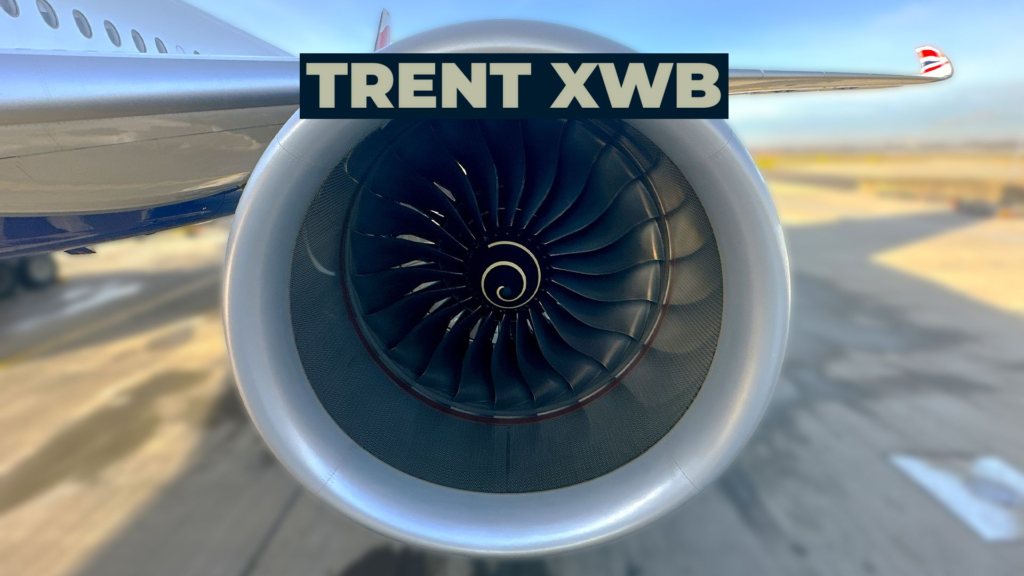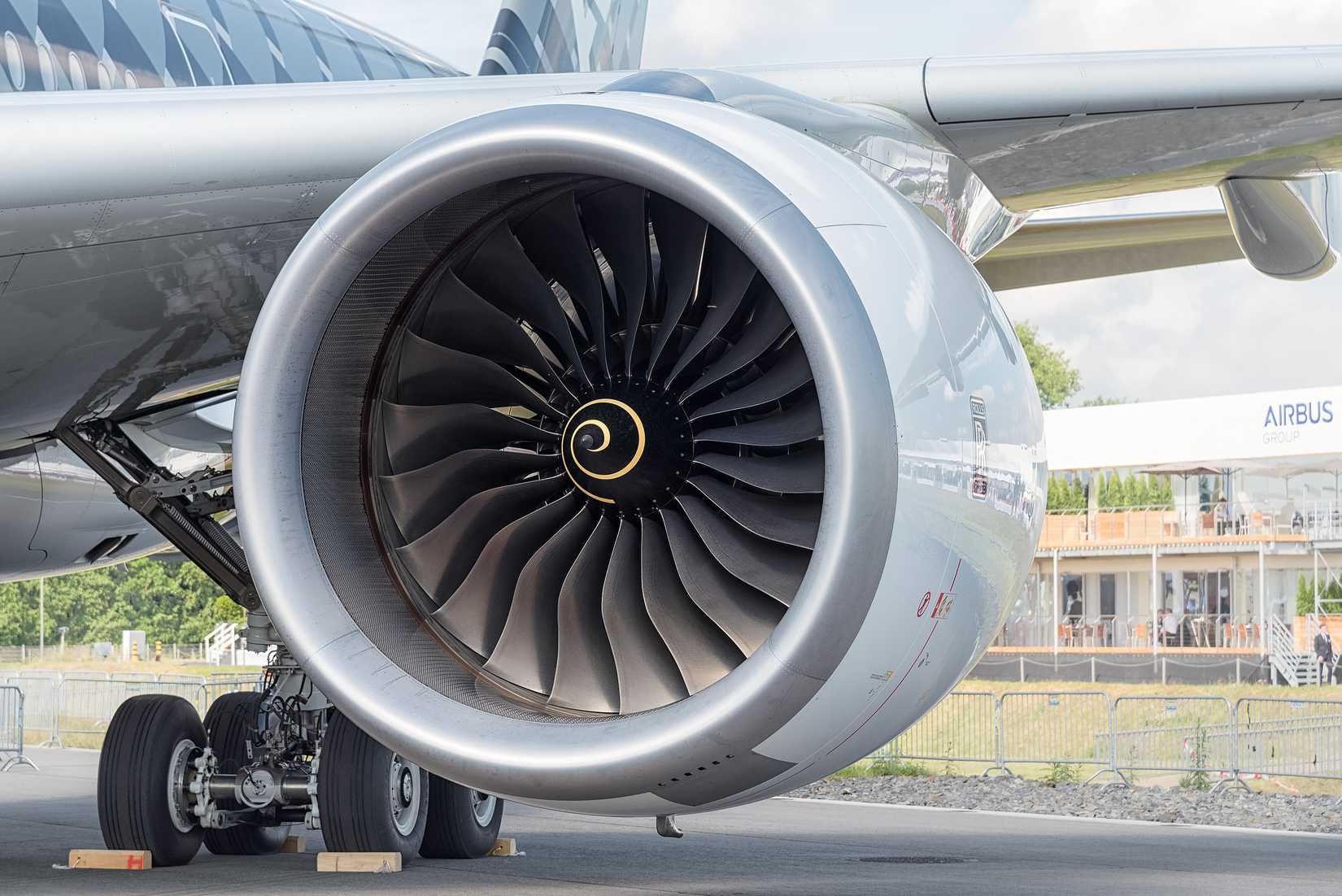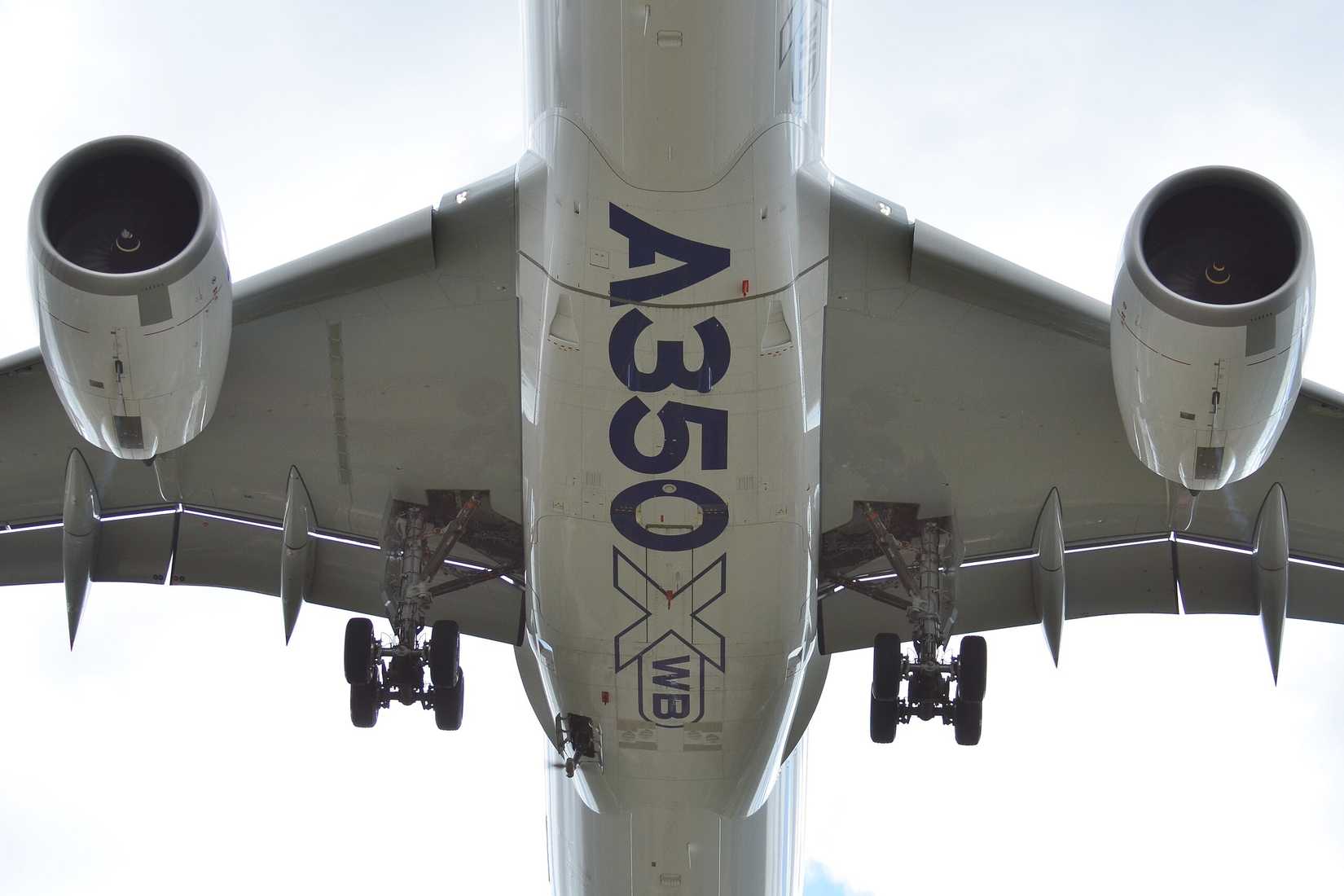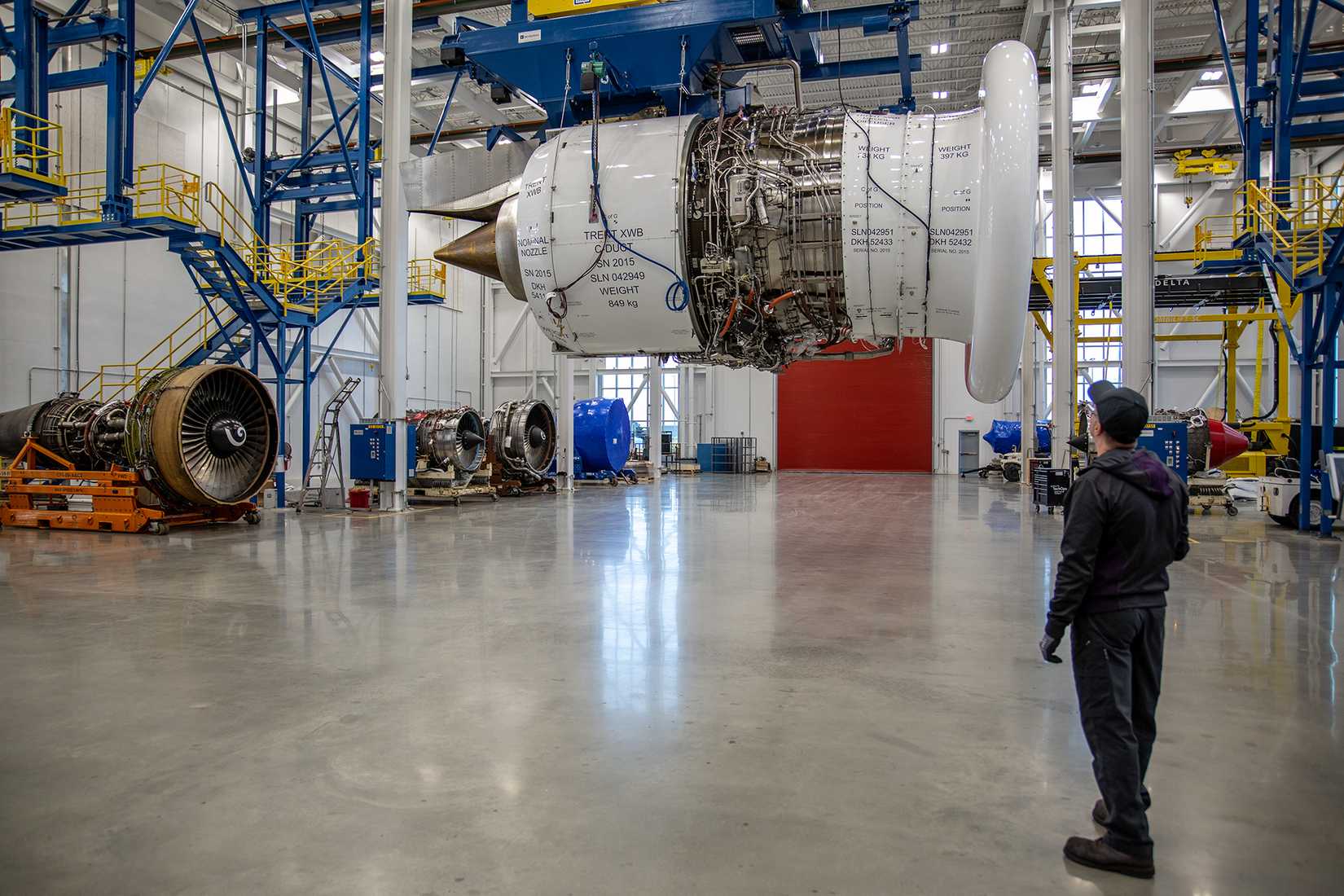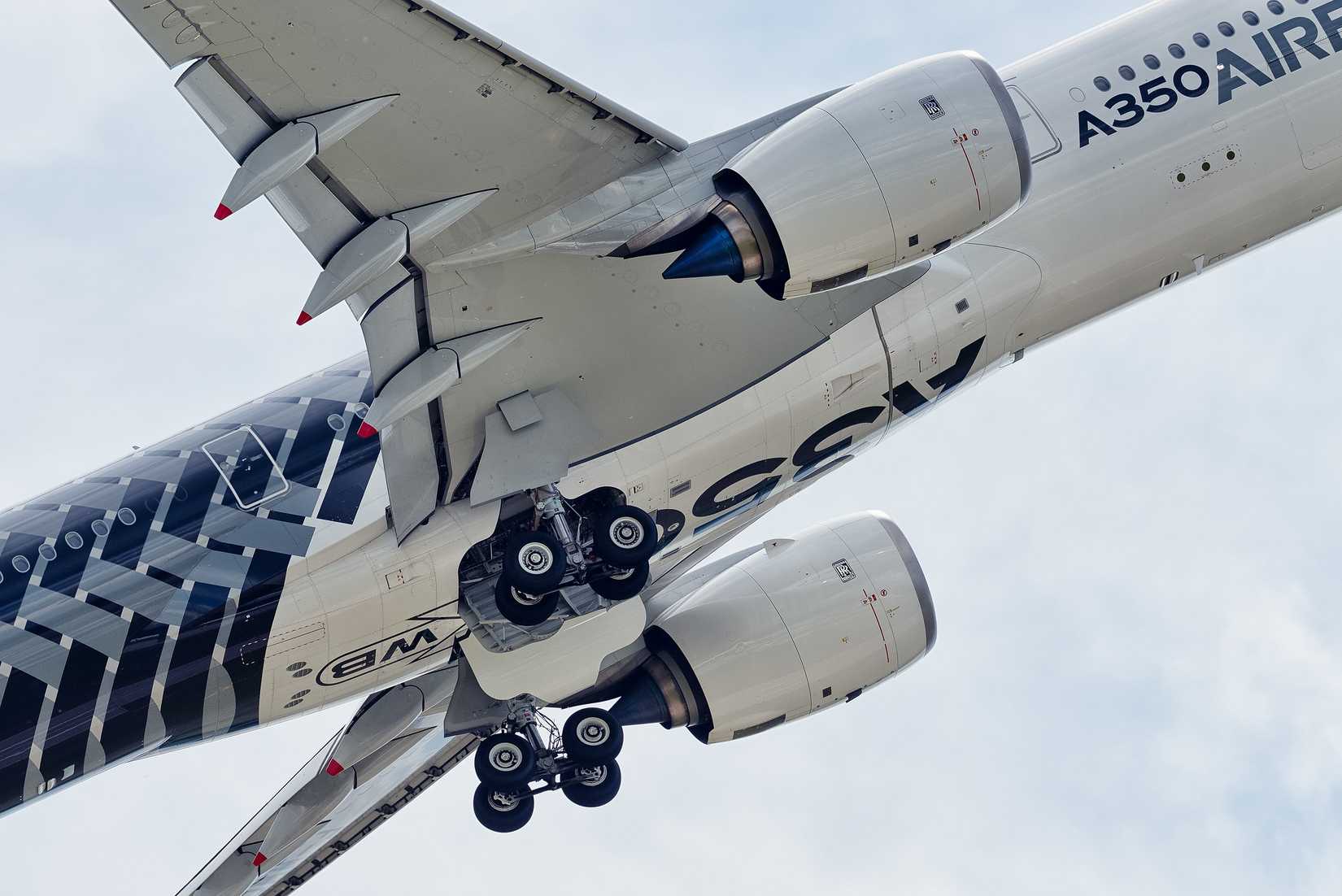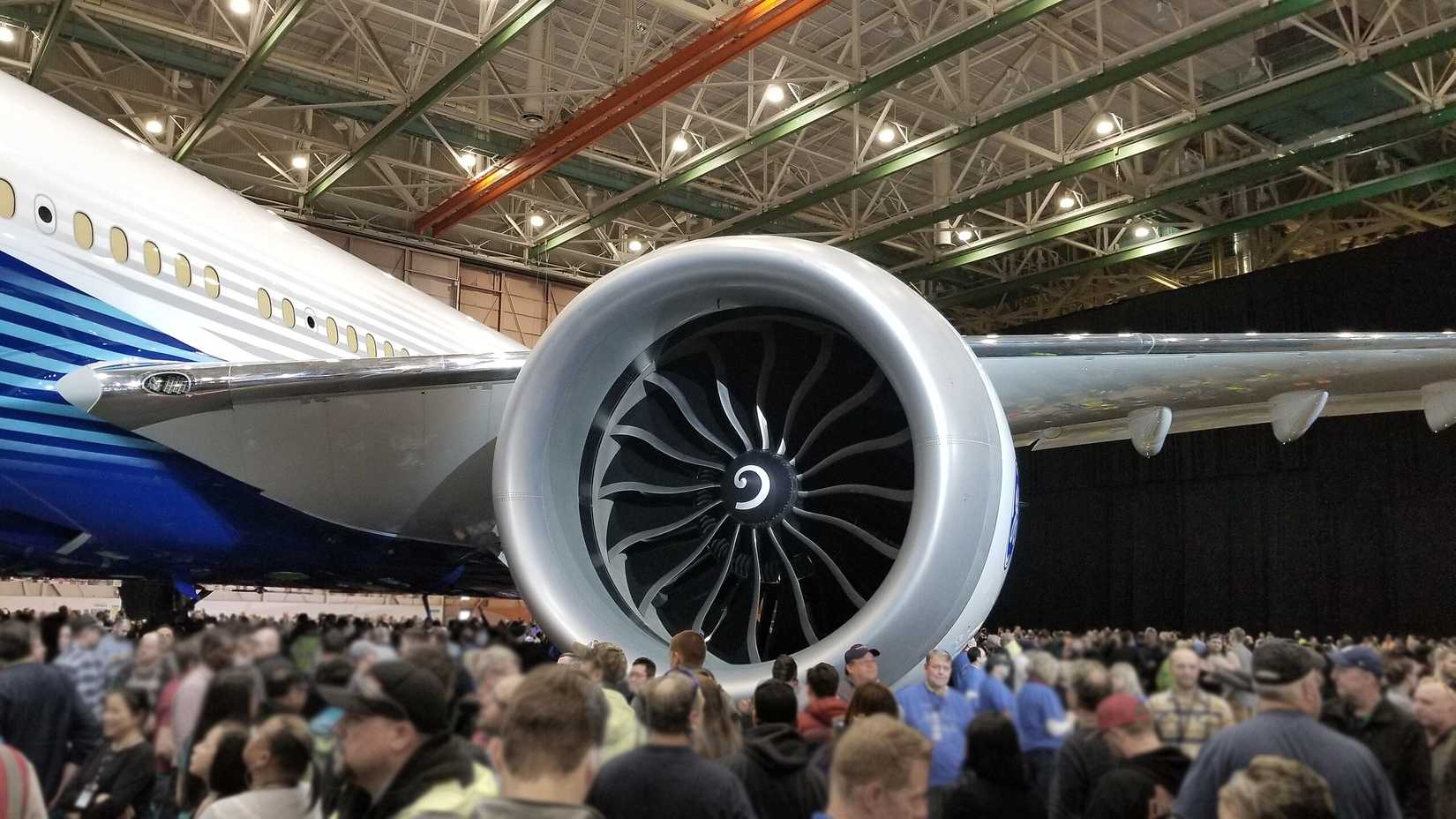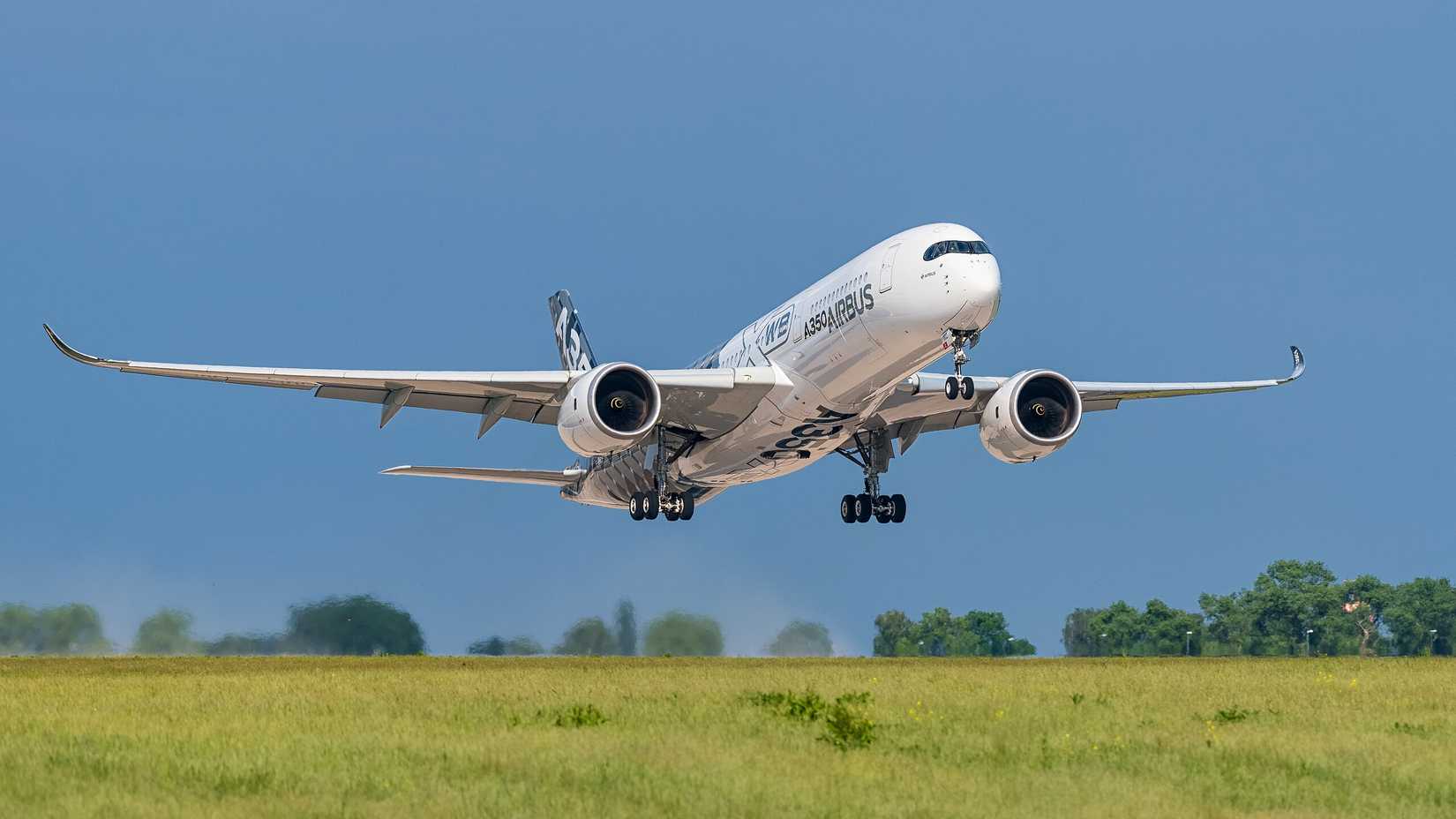There are countless reasons that the Rolls-Royce Trent XWB is the ideal engine for the A350. Rolls-Royce describes it as: “extremely efficient, impressively versatile, ultra-reliable, unbelievably popular.” The manufacturer believes that its many years exclusively powering the A350 are proof of these characteristics.
As such, there is no single reason that Airbus selected the engine to power the A350, beyond the simple fact that they have reached an exclusivity agreement with the manufacturer. Discover more below about the host of advancements offered by the Trent XWB, and how it continues to develop based on lessons from over a decade of operation. Then learn how General Electric and Boeing aim to compete with the GE9X and the 777X, the world’s largest aircraft engine.
Trent XWB Facilitates Leading Widebody Efficiency
Airbus claims that the Trent XWB is the most efficient large aero engine in the skies. Compared to the first Trent engine, it has a 15% lower fuel consumption, helping A350s achieve a 25% lower total fuel burn compared to aircraft of the previous generation. This yields a reduction in operating costs of $2.9 million per year, primarily due to fuel savings, helping airlines using the A350 achieve greater profits, which is essential in an industry with such narrow margins.
The greater efficiency also allows the engine to operate more quietly. That means less noise pollution for those on the ground and a quieter cabin for those onboard.
Rolls-Royce attributes the leading efficiency of its jets to lessons learned over 30 years of developing the Trent engine family. During this time, they have begun to use better and lighter materials and build jets with higher bypass ratios.
Superb Versatility
Rolls-Royce claims that the Trent XWB powers 700 routes and has operated from 127 cities. This isn’t just a broad selection of routes, as there is also real quality here. For example, since November 2020, Trent XWB engines have powered the world’s longest active commercial flight: Singapore Airlines Flights 23 and 24. Using an Airbus A350-900ULR, this route covers 8,288 nautical miles in 18 hours and 40 minutes.
Simultaneously, Trent XWB engines are also used for exceptionally short routes. For example, A350s fly the short hop from Kilimanjaro Airport to Zanzibar, taking around 90 minutes.
The table below includes the key specifications for the Trent XWB’s smaller -84 variant. It uses EASA data:
|
Fan diameter |
118 inches (3 m) |
|---|---|
|
Length |
228.8 inches (5,800 mm) |
|
Dry weight |
16,043 lbs (7,277 kg) |
|
Takeoff thrust |
84,200 lbf (375 kN) |
|
Bypass ratio |
9.6:1 |
|
Pressure ratio |
50:1 |
|
Thrust-to-weight ratio |
5.25 |
The jet’s versatility is further aided by its record-breaking ETOPS capabilities. In 2014, the European Union Aviation Safety Agency certified the jet for 370 minutes of ETOPS operations. Beyond helping the A350 to be a safer jet, the ETOPS capabilities also allow the plane to reach its destination faster. That is because it can plot a straighter course for lengthy transoceanic flights, as emergency diversions can be over six hours of flight time away.
The Trent XWB Fended Off General Electric Competition
Rolls-Royce’s exclusive partnership with Airbus on the A350 was not always guaranteed. General Electric has been trying to force its way into powering the aircraft family since May 2009, when they suggested offering the 787’s GEnx for the A350 (-800 and -900). The manufacturer has also stated that it could develop a product that outperforms the Trent XWB. This is likely just bluster, as it has said it won’t develop such an engine, as it would be in direct competition with GE90-115B-powered 777 variants. Any deals to power Airbus widebody jets would put its relationship with Boeing at risk.
Such suggestions from General Electric have now been rendered meaningless, as Reuters has reported that Rolls-Royce has extended its exclusive deal until 2030. The deal came at the perfect time in 2021, as Rolls-Royce had just disclosed a record $5.6 billion 2020 loss.
Rolls-Royce Chief Executive Warren East told reporters why the deal was so important for the firm: “We’re already exclusive on the A350-1000, and extending our position on the -900 variant, that accounts for the bulk of the A350 fleet, out to 2030 is in line with the development timeline for our next generation UltraFan engine programme.”
The Trent XWB Continues To Develop
Another reason that Trent XWB engines have continued to be popular is the constant improvement sought by Rolls-Royce. In April 2025, Airbus’ Newsroom reported that the European Union Aviation Safety Agency (EASA) had certified the A350-900 with the new Rolls-Royce Trent XWB-84 Enhanced Performance (EP) engine. This engine came with a host of improvements based on a decade of Trent XWB operations. These included a better fan and compressor, alongside developed turbine aerodynamics and turbine blade cooling. Combined, the developments yielded a 1% improvement in fuel efficiency and CO2 emissions. That sounds small, but it adds up to a sizable development in the context of A350 flights that can be longer than ten hours. It could also push the A350’s range further still, allowing airlines to serve new city pairs. Further environmental improvements stem from the fact that this engine can be operated with 50% sustainable aviation fuel (SAF) and is a step towards 100% SAF use.
Julien Puyou, Airbus’ Head of Widebody Programme, said: “Together with our partner Rolls-Royce, this latest evolution underscores our joint commitment to continuous improvement and innovation. The Trent XWB-84 is already among the most efficient widebody engines on the market and this enhanced version will deliver even greater performance and efficiency for our airline customers.”
Pete Young, Chief Engineer, shared similar sentiments regarding the Trent XWB-84 EP: “What excites me most is that we’ve continued to innovate and make it even better in every way with this new standard. Certification is a defining moment for our team, its testament to their expertise and dedication, and the culmination of hard work.”
General Electric’s Large Aero Engine Competitor
In competition with the Trent XWB is the world’s other enormous and highly efficient aero engine: General Electric’s GE9X. This engine is the largest aircraft engine ever built. The engine will power the 777X when it is eventually delivered. At first glance, with its gigantic size and unmatched power, the GE9X appears to be about brute force and generating as much thrust as possible. However, it matches Rolls-Royce’s use of advanced composite materials and an extremely high bypass ratio to be a surprisingly light and efficient engine. These attributes help the GE9X to achieve a 10% greater fuel efficiency than the GE90.
The table below includes critical specifications for the GE9X based on Federal Aviation Administration data:
|
Fan Diameter |
134 inches (3,404 mm) |
|---|---|
|
Length |
224.0 inches (5,690 mm) |
|
Bypass ratio |
10:1 |
|
Overall pressure ratio |
60:1 |
|
Weight |
21,230 lb (9,630 kg) |
|
Takeoff thrust |
110,000 lbf (489.3 kN) |
|
Maximum continuous thrust |
103,500 lbf (460.4 kN) |
|
Thrust-to-weight ratio |
5.2 |
Rolls-Royce’s engine benefits from over a decade of commercial operations. During this time, countless customers have shown that the engine performs well and is reliable. The same cannot be said for the GE9X due to the delays that continue to plague the 777X. As such, it is currently impossible to make a true judgment about how the GE9X will stack up against either Trent XWB variant. This space is well worth watching when the 777X comes into service in 2027.
The Trent XWB For The A350F Is Coming
Airbus names its A350F the only true new freighter that meets the latest ICAO CO2 emissions standards and is set for release in the second half of 2027, later than the initially planned 2026. Part of the expected strong emissions’ performance is down to the fact that Rolls-Royce is further optimizing the XWB engine for freighter use. The A350F will utilize the XWB-97, which will contribute to a freighter with superior range and payload compared to its competitors. The manufacturer writes: “Based on the A350 programme, the A350F delivers more payload, more range and more volume compared to the 777F, all comforting its position as the only future-proof choice for operators today.”
The XWB-97 features a range of improvements over the XWB-84 that will make it ideal for the A350F. Its fan runs 6% faster than the -84. To deal with the extra air flow, the -97’s combustion chamber has been strengthened and made able to withstand higher temperatures. The result is improved thrust. The XWB-97 also uses compressor blisk technology that yields 15% module weight savings.
You may have already flown on an aircraft powered by the XWB-97, as it is used on the A350-1000. This engine has made a mark for its impressive versatility, capable of operating efficiently for flights ranging from 45 minutes to 16 hours. The engine is also behind Qantas’ Project Sunrise flights from Australia to New York and London, which could take 20 hours.


